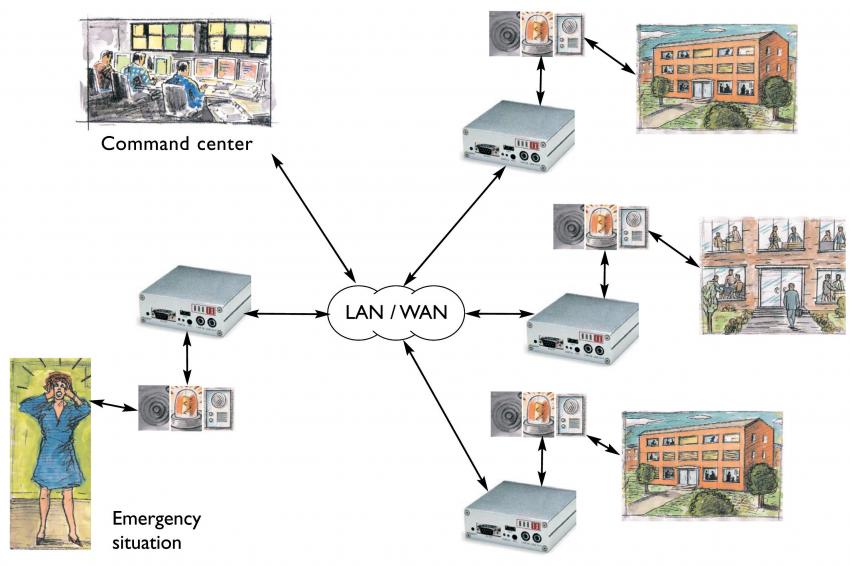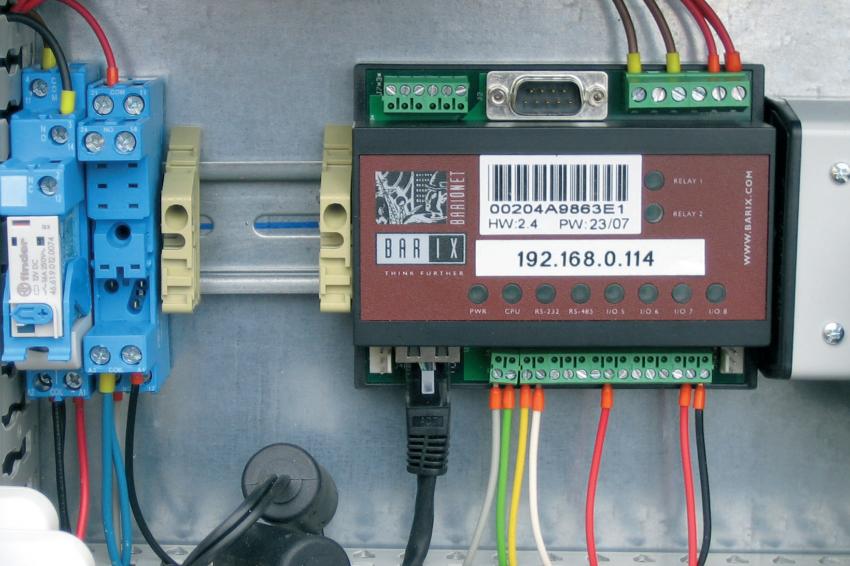Johannes G. Rietschel Barix: audio distribution alternatives for security
09.08.2012 - Johannes G. Rietschel Barix: audio distribution alternatives for security. The increasing number of security incidents on multi-building facilities worldwide is causing security pr...
Johannes G. Rietschel Barix: audio distribution alternatives for security. The increasing number of security incidents on multi-building facilities worldwide is causing security professionals to take a closer look at their security systems and emergency response strategies. Corporate campuses, industrial complexes, airports, ground transportation centres, as well as university and high school facilities have all experienced real life emergencies and threats. The efficiency of the response to an incident can be hampered by problems with cross-building and cross-site communication arising from the use of independent PA systems for each space, and delay can cost lives. The need for a unified emergency messaging system on multibuilding campuses and within communities should not be lightly dismissed.
Many technologies such as video, telephone and security have already begun to converge on to the IP network backbone. Audio, in the form of a campus wide Public Address system, is often overlooked. The fact is, audio remains the best and most reliable means for getting a mass notification message out quickly to a large number of people spread over a large area. Computer Networks as the Basis for a PA System Computer networks are today as essential a part of a site‘s infrastructure as the water or electric supply, and are to be found in practically every public, commercial or educational facility.
PA systems are not as widespread, and a unified PA system that reaches all areas within a multibuilding site is even rarer. By utilising the computer network, it is now straightforward to either implement a brand new, IP-based PA system, or to interlink multiple, separate, existing PA systems, delivering a fast, efficient and reliable emergency broadcast system at low cost. Universities in particular are eager to improve their emergency response and messaging systems, but are often held back for budgetary reasons.
However, with an IP backbone there are several possibilities for building out a system utilising the existing network infrastructure, whether all at once or in a gradual, phased integration plan.
- The power of audio over IP distribution begins with its reach. IP offers the opportunity to reach multiple destination points reliably and cost-effectively from a centralised monitoring or announcement point. This could be a single location, although larger campuses may opt for decentralising and have several remote monitoring/announcement points from where emergency notifications can be broadcast across the entire campus.
- Scalability becomes a factor when considering the number of destination points broadcasting the message. Most campuses looking into IP audio distribution begin at the building level, focussing on the outdoor perimeter and working toward an indoor deployment. From there, the opportunity to drill down to the classroom or office level becomes a consideration. A third level may build control into the solution such as electronic door strikes for campus lockdown in the most volatile and critical situations.
- An IP audio distribution system for security generally consists of various hardware devices and eventually some software solutions. The Barix solution provides hardware devices which can be operated “PC-Free”, although available central software may be beneficial for monitoring and special functionality. The devices are assigned an IP address with the help of a browser (or DHCP server) and after this one-time configuration, they can communicate autonomously, streaming audio in a point-to-multipoint design between encoders, decoders, and potentially basic intercom or two-way voice over IP devices.
- Campus-wide paging is the most affordable solution for most entities transitioning to IP-based audio for emergency notification. This is also the most immediately deployable system, using off-the-shelf technology to enable large area notification over new or existing PA systems. The ability to use off-the shelf technology is attractive to those seeking a quick and painless deployment, while also minimising system costs.
- An example of an off-the-shelf Barix campuswide paging solution brings together its Annuncicom intercom and Exstreamer audio decoding devices. This deployment features an Annuncicom device integrated as a wall intercom at a central office, such as campus police headquarters at a university or the main control room in a transportation centre. Live voice or pre-recorded messages are sent from the central office over IP to Exstreamers at multiple destination points, where the devices decode the audio for broadcast over the PA system loudspeakers.
A Message to Specific Destinations or “All Call”
The flexibility of the IP network means that the operator could assign the message to one or more specific destination points, or broadcast the message to all points using a multicast configuration. The ability to drill down to specific points is valuable for wider-scale deployments that take the decoding devices and PA systems indoors, perhaps to each hallway in multi-floor buildings or even specific rooms. A room-by-room deployment offers more direct emergency communication in the form of a campus wide intercom system.
A typical Barix setup would place Annuncicom devices in each room, with the main system again residing in the central office. Security professionals have the ability to communicate with destination intercoms in this scenario with either an “all call” broadcast or use a software configuration to pinpoint specific rooms. The flipside to this deployment is the two-way capability of the intercom solution, and how it benefits those at the destination point.
Using an intercom device with two or more inputs, high-schools could connect the device to a panic button in each room. Teachers could initiate the live intercom in an emergency situation, alerting security at the central office and allowing them to listen into the classroom. This approach allows security personnel to make an assessment prior to taking action.
The addition of access control and door management systems for lockdown situations adds considerable costs, but those costs can be alleviated if built on top of a smaller-scale IP system. Access control technology managed over IP offers a near-immediate result once the command is sent over the network, and in dangerous situations, from inclement weather events to armed individuals, it can save lives. In an ideal deployment, the IP intercom device would communicate with hardware devices around campus to activate door strikes, sound alarms and authorise entry — all while distributing emergency notification to other intercoms and PA systems around the campus.
Barix offers technology through its Barionet automation line for lockdown situations that is compatible with common card readers and door mechanics.
Two-way Voice over IP Technology
The evolution of intercom technology into true two-way voice over IP technology also raises the possibility of creating an indexed directory in a central database with standard telephone extensions. This opens the door to use the SIP protocol to initiate connections from a SIP-enabled phone to any intercom location by simply dialling an extension number.
The SIP protocol may also be an attractive approach in an industrial complex or corporate office building where security personnel are required to keep tabs on those entering the building. Security personnel can communicate on the move with mobile SIP phones, and allow or deny access via two-way voice over IP connectivity to those requesting entry to the building from the outside, whether the person is at the front door on foot or in a vehicle at a gateway outpost.
The appeal of IP technology boils down to understanding that a mix of intelligent IP-connected devices, performing their tasks autonomously, can easily be integrated into a larger campus-wide or even a community-wide emergency system. The flexibility of IP technology also means that the system can be used for lighter purposes, perhaps streaming music around the outdoor perimeters, with priority ports in the receiving devices to interrupt the audio stream with live or pre-recorded security announcements.
Regardless of how the system is deployed and at what scale, the IP environment offers a reliable, flexible, scalable and affordable approach to audio distribution for security and emergency announcement purposes – ultimately designed to keep everyone safe and informed.
Contact:
Johannes G. Rietschel Barix AG,
Zurich, Switzerland
Tel.: +41 43 433 22 11
Fax: +41 44 274 28 49
info@barix.com
www.barix.com












